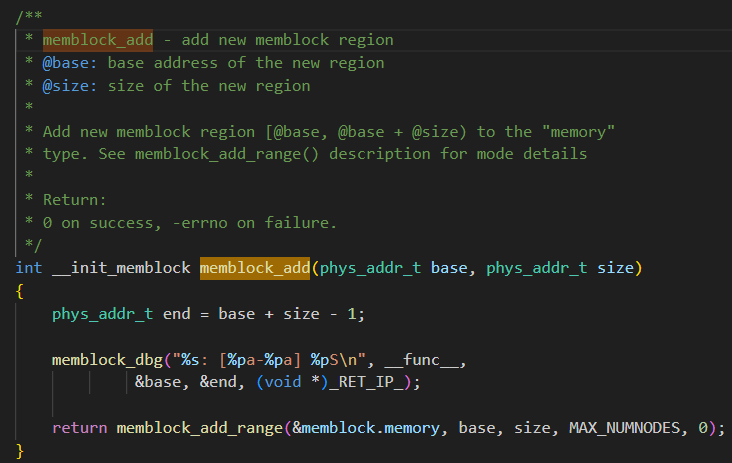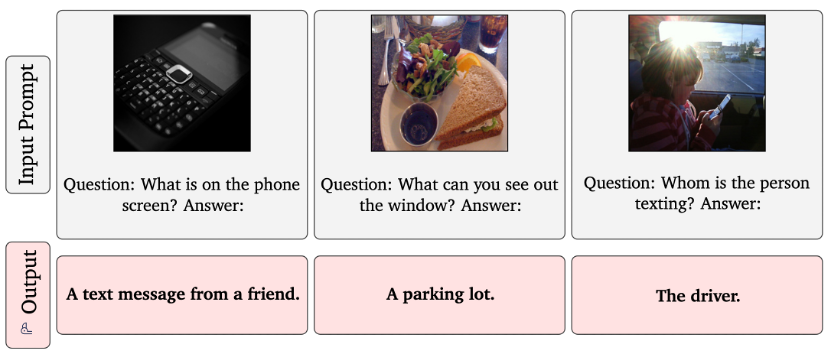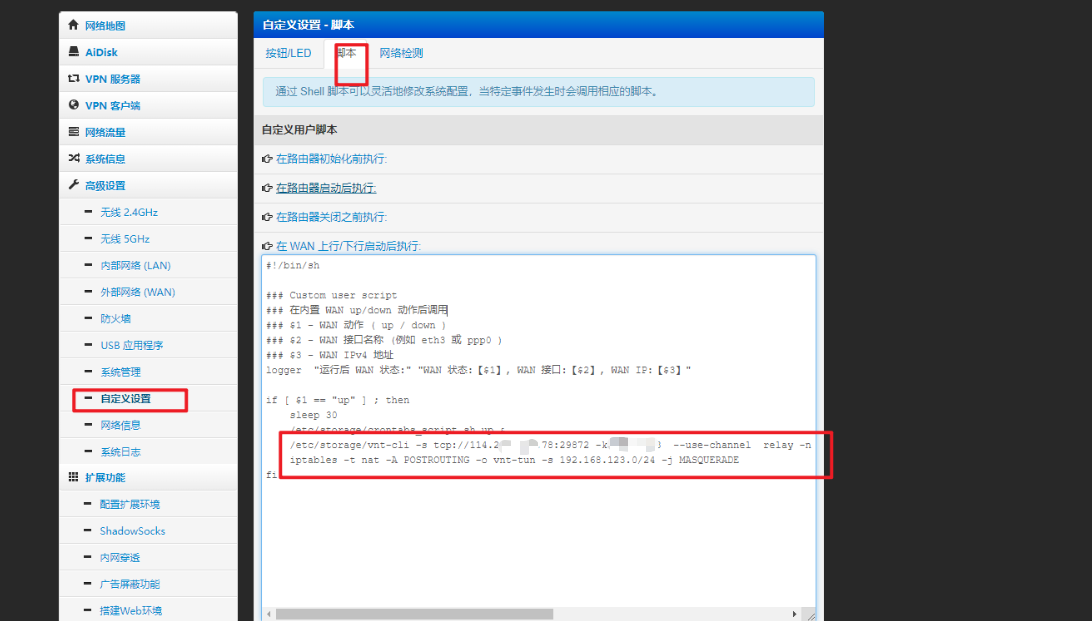作者:秦怀
1 简介
计算机科学领域的任何问题都可以通过增加一个间接的中间层来解决,这句话就是整个计算机软件以及系统设计中的核心思想,而缓存对这一思想的一种实践。
缓存,总归会受到存储空间的限制,当缓存的空间不足的时候,如果在保持一定系统文档的情况下,还能兼顾到缓存命中率呢?这就需要我们选择合适的缓存淘汰算法。
缓存淘汰算法种类比较多,我们本次主要介绍 FIFO:
先进先出,类似队列的特性,淘汰缓存中最早添加的记录,该算法基于"最早被添加的数据,不再被使用的可能性最大"。要想实现这种算法,只需要使用一个队列维护数据,并同时维护一个数据最大容量,每次新增数据都添加到队尾,如果内存不够,那么就先淘汰掉队头的元素。
缺点:
FIFO 算法的缺点也很明显,有些数据虽然被添加的比较早,但是使用频率也会很高,在这种策略下会被频繁添加进去,过一会又被淘汰掉,缓存命中率不高。
2 核心原理
下面是一些设计的思路:
- 存储元素使用队列,并且队列容量有一定限制。但是为了兼顾查询效率,需要同时使用哈希表来存储 key 和 Element 的映射。
- 为了删除的时候,能找到前后元素,队列需要维护成 双向队列。
基本操作如下,为了处理并发时程序错误,需要在修改数据的时候加锁:
- Set :先查找是否存在,分别执行两种操作。
- 新元素,追加在队尾。
- 已存在的元素,直接修改。
- Get:
- 按照 Key 在 Hash 表中查询出来。
- Delete:
- 先查找到元素,然后从链表以及哈希表中删除,更新缓存状态。
- Stat:获取存储的状态
3 实现
3.1 使用自带的双向链表结构
本小节是最简单粗暴的实现,直接使用原生的双向队列,下面是一些设计的思路,仅供参考。
3.1.1 实体设计
3.1.2 缓存状态
缓存总的状态维护,定义一个 stat.go 类:
type Stat struct { // key 的个数 keyCount int64 // value 使用得最大的容量 maxBytes int64 // value 已使用得最大的容量 usedBytes int64
}
3.1.3 核心接口
定义基础能力接口 cache.go,除了增删改查,还有获取缓存状态:
type Cache interface { Set(key string, value []byte) Get(key string) []byte Del(key string) Stat() Stat
}
3.1.4 元素封装
每个元素中,保存着 key 以及值,值统一使用 byte 数组进行存储,之所以用 []byte ,不用具体的数据结构,是因为需要抽象,适配所有的类型。
但是使用 []byte 我们取值后还需要转成 struct{},比较消耗 CPU,为什么不使用 interface{} 呢?
网上看到的一个答案是:内存中存储过多的 interface{} 会造成较大的 GC 影响:Getting to Go: The Journey of Go's Garbage Collector - The Go Programming Language
type entry struct { key string value []byte
}
3.1.5 整体实现
fifo.go 文件中,存储元素使用队列,并且队列容量有一定限制。但是为了兼顾查询效率,需要同时使用哈希表来存储 key 和 Element 的映射。
type fifo struct { // 为了快速找到该value cache map[string]*list.Element // 按照添加顺序保存的list head *list.List // 缓存数据 stat Stat
}
对外的初始化方法:
func New(maxBytes int64) Cache { return &fifo{ cache: map[string]*list.Element{}, head: list.New(), stat: Stat{ keyCount: 0, maxBytes: maxBytes, usedBytes: 0, }, }}
下面就是具体的实现:
import ( "container/list"
) type fifo struct { // 为了快速找到该value cache map[string]*list.Element // 按照添加顺序保存的list head *list.List // 缓存数据 stat Stat
} func (f *fifo) Set(key string, value []byte) { if e, ok := f.cache[key]; ok && e != nil { f.setDataExisted(e, value) } else { f.setDataNotExisted(key, value) }} func (f *fifo) setDataNotExisted(key string, value []byte) { newEntry := &entry{ key: key, value: value, } if f.stat.maxBytes > 0 { for f.stat.usedBytes+int64(len(key)+len(value)) > f.stat.maxBytes { f.removeOldestElement() } } e := f.head.PushBack(newEntry) f.cache[key] = e f.stat.usedBytes = f.stat.usedBytes + int64(len(key)+len(value)) f.stat.keyCount++ } func (f *fifo) setDataExisted(e *list.Element, value []byte) { originEntry := e.Value.(*entry) originSize := len(originEntry.value) beRemoved := false if f.stat.maxBytes > 0 { for (int64)(len(value))-(int64)(originSize) > f.stat.maxBytes-f.stat.usedBytes { if f.head.Front() == e { beRemoved = true } f.removeOldestElement() } } if beRemoved { f.setDataNotExisted(originEntry.key, value) return } originEntry.value = value f.stat.usedBytes = f.stat.usedBytes + (int64)(len(value)) - (int64)(originSize) } func (f *fifo) removeOldestElement() { f.removeElement(f.head.Front())
} func (f *fifo) removeElement(e *list.Element) { if e == nil { return } // 双向链表的删除 f.head.Remove(e) originEntry := e.Value.(*entry) f.stat.keyCount-- // 重新计算使用空间 f.stat.usedBytes = f.stat.usedBytes - int64(len(originEntry.key)+len(originEntry.value)) // Hash表删除 delete(f.cache, originEntry.key)
} func (f *fifo) Get(key string) []byte { if e, ok := f.cache[key]; ok { return e.Value.(*entry).value } return nil
}
func (f *fifo) Del(key string) { if e, ok := f.cache[key]; ok { f.removeElement(e) }}
func (f *fifo) Stat() Stat { return f.stat
} func New(maxBytes int64) Cache { return &fifo{ cache: map[string]*list.Element{}, head: list.New(), stat: Stat{ keyCount: 0, maxBytes: maxBytes, usedBytes: 0, }, }}
测试一下,编写测试类 cache_test.go :
import ( "Go-Cache/00_fifo/character01" "fmt" . "github.com/smartystreets/goconvey/convey" "testing") func TestCache(t *testing.T) { Convey("TestApplyFunc", t, func() { cache := character01.New(100) stat := fmt.Sprintf("stat:%v", cache.Stat()) So(stat, ShouldEqual, "stat:{0 100 0}") cache.Set("hello", []byte("world")) cache.Set("hello2", []byte("world2")) stat = fmt.Sprintf("stat:%v", cache.Stat()) So(stat, ShouldEqual, "stat:{2 100 22}") cache.Set("hello2", []byte("changeWorld2")) value := cache.Get("hello2") So(string(value), ShouldEqual, "changeWorld2") stat = fmt.Sprintf("stat:%v", cache.Stat()) So(stat, ShouldEqual, "stat:{2 100 28}") cache.Set("k1", []byte("longlonglonglonglonglonglonglonglonglonglonglonglonglonglonglonglonglongV1")) stat = fmt.Sprintf("stat:%v", cache.Stat()) So(stat, ShouldEqual, "stat:{2 100 94}") cache.Set("hello2", []byte("newHelloWorld2newHelloWorld2")) value = cache.Get("hello2") So(string(value), ShouldEqual, "newHelloWorld2newHelloWorld2") stat = fmt.Sprintf("stat:%v", cache.Stat()) So(stat, ShouldEqual, "stat:{1 100 34}") cache.Set("num", character01.IntToBytes(1)) num := cache.Get("num") So(character01.BytesToInt(num), ShouldEqual, 1) stat = fmt.Sprintf("stat:%v", cache.Stat()) So(stat, ShouldEqual, "stat:{2 100 45}") cache.Set("num", nil) So(cache.Get("num"), ShouldEqual, nil) stat = fmt.Sprintf("stat:%v", cache.Stat()) So(stat, ShouldEqual, "stat:{2 100 37}") cache.Del("num") stat = fmt.Sprintf("stat:%v", cache.Stat()) So(stat, ShouldEqual, "stat:{1 100 34}") })}
3.2 增加锁
但是明显上面的代码是有问题的,当并发到一定程度,就会出现并发写的 panic:
func TestNoLock(t *testing.T) { // 包名是上面小节的包名cache := no_lock.New(100000) num := 1000 var wg sync.WaitGroup for i := 0; i < num; i++ { index := i wg.Add(1) // go func() { cache.Set("hello"+string(rune(index)), []byte("world"+string(rune(index)))) wg.Done() //5 }() } wg.Wait() fmt.Printf("stat:%v\n", cache.Stat())
}
panic 的报错:
fatal error: concurrent map read and map writegoroutine 40 [running]:
runtime.throw({0x1125cae?, 0x1?})/usr/local/go/src/runtime/panic.go:992 +0x71 fp=0xc000133698 sp=0xc000133668 pc=0x1033791
runtime.mapaccess2_faststr(0x2?, 0x0?, {0xc0000960a8, 0x6})/usr/local/go/src/runtime/map_faststr.go:117 +0x3d4 fp=0xc000133700 sp=0xc000133698 pc=0x1011c74
Go-Cache/00_fifo/character01.(*fifo).Set(0xc00006e4b0, {0xc0000960a8, 0x6}, {0xc0000960a0, 0x6, 0x8})
那为了实现并发安全,我们需要增加一把锁:
type fifo struct { // 为了快速找到该value cache map[string]*list.Element // 按照添加顺序保存的list head *list.List // 缓存数据 stat Stat mutex sync.Mutex
}
在所有可能修改数据的操作之前,加上锁, 比如 set :
func (f *fifo) Set(key string, value []byte) { f.mutex.Lock() defer f.mutex.Unlock() if e, ok := f.cache[key]; ok && e != nil { f.setDataExisted(e, value) } else { f.setDataNotExisted(key, value) }}
fifo.go 文件改造如下:
import ( "container/list" "sync" "time") type fifo struct { // 为了快速找到该value cache map[string]*list.Element // 按照添加顺序保存的list head *list.List // 缓存数据 stat Stat mutex sync.Mutex
} func (f *fifo) Set(key string, value []byte) { f.mutex.Lock() defer f.mutex.Unlock() if e, ok := f.cache[key]; ok && e != nil { f.setDataExisted(e, value) } else { f.setDataNotExisted(key, value) }} func (f *fifo) setDataNotExisted(key string, value []byte) { newEntry := &entry{ key: key, value: value, } if f.stat.maxBytes > 0 { for f.stat.usedBytes+int64(len(key)+len(value)) > f.stat.maxBytes { f.removeOldestElement() } } e := f.head.PushBack(newEntry) f.cache[key] = e f.stat.usedBytes = f.stat.usedBytes + int64(len(key)+len(value)) f.stat.keyCount++ } func (f *fifo) setDataExisted(e *list.Element, value []byte) { originEntry := e.Value.(*entry) originSize := len(originEntry.value) beRemoved := false if f.stat.maxBytes > 0 { for (int64)(len(value))-(int64)(originSize) > f.stat.maxBytes-f.stat.usedBytes { if f.head.Front() == e { beRemoved = true } f.removeOldestElement() } } if beRemoved { f.setDataNotExisted(originEntry.key, value) return } originEntry.value = value f.stat.usedBytes = f.stat.usedBytes + (int64)(len(value)) - (int64)(originSize) } func (f *fifo) removeOldestElement() { f.removeElement(f.head.Front())
} func (f *fifo) removeElement(e *list.Element) { if e == nil { return } // 双向链表的删除 f.head.Remove(e) originEntry := e.Value.(*entry) f.stat.keyCount-- // 重新计算使用空间 f.stat.usedBytes = f.stat.usedBytes - int64(len(originEntry.key)+len(originEntry.value)) // Hash表删除 delete(f.cache, originEntry.key)
} func (f *fifo) Get(key string) []byte { f.mutex.Lock() defer f.mutex.Unlock() if e, ok := f.cache[key]; ok { return e.Value.(*entry).value } return nil
}
func (f *fifo) Del(key string) { f.mutex.Lock() defer f.mutex.Unlock() if e, ok := f.cache[key]; ok { f.removeElement(e) }}
func (f *fifo) Stat() Stat { return f.stat
} func New(maxBytes int64) Cache { return &fifo{ cache: map[string]*list.Element{}, head: list.New(), stat: Stat{ keyCount: 0, maxBytes: maxBytes, usedBytes: 0, }, }}
再测试一下, 一切正常:
func TestCache(t *testing.T) { cache := character02.New(100000) num := 100 var wg sync.WaitGroup for i := 0; i < num; i++ { index := i wg.Add(1) // go func() { cache.Set("hello"+string(rune(index)), []byte("world"+string(rune(index)))) wg.Done() //5 }() } wg.Wait() fmt.Printf("stat:%v\n", cache.Stat())
}

3.3 读写锁
上面的锁,是全局锁,也就是不管是读还是写,都会上锁,如果是读多写少的情况,我们希望读是可以并发的,只有写是独占的,这个时候就需要考虑读写锁了。(缓存不一定适合使用读写锁,这只是个思路,抛砖引玉。)
import ( "container/list" "sync" "time") type fifo struct { // 为了快速找到该value cache map[string]*list.Element // 按照添加顺序保存的list head *list.List // 缓存数据 stat Stat mutex sync.RWMutex
} func (f *fifo) Set(key string, value []byte) { f.mutex.Lock() defer f.mutex.Unlock() if e, ok := f.cache[key]; ok && e != nil { f.setDataExisted(e, value) } else { f.setDataNotExisted(key, value) }} func (f *fifo) setDataNotExisted(key string, value []byte) { newEntry := &entry{ key: key, value: value, } if f.stat.maxBytes > 0 { for f.stat.usedBytes+int64(len(key)+len(value)) > f.stat.maxBytes { f.removeOldestElement() } } e := f.head.PushBack(newEntry) f.cache[key] = e f.stat.usedBytes = f.stat.usedBytes + int64(len(key)+len(value)) f.stat.keyCount++ } func (f *fifo) setDataExisted(e *list.Element, value []byte) { originEntry := e.Value.(*entry) originSize := len(originEntry.value) beRemoved := false if f.stat.maxBytes > 0 { for (int64)(len(value))-(int64)(originSize) > f.stat.maxBytes-f.stat.usedBytes { if f.head.Front() == e { beRemoved = true } f.removeOldestElement() } } if beRemoved { f.setDataNotExisted(originEntry.key, value) return } originEntry.value = value f.stat.usedBytes = f.stat.usedBytes + (int64)(len(value)) - (int64)(originSize) } func (f *fifo) removeOldestElement() { f.removeElement(f.head.Front())
} func (f *fifo) removeElement(e *list.Element) { if e == nil { return } // 双向链表的删除 f.head.Remove(e) originEntry := e.Value.(*entry) f.stat.keyCount-- // 重新计算使用空间 f.stat.usedBytes = f.stat.usedBytes - int64(len(originEntry.key)+len(originEntry.value)) // Hash表删除 delete(f.cache, originEntry.key)
} func (f *fifo) Get(key string) []byte { f.mutex.RLock() defer f.mutex.RUnlock() // time.Sleep(1000000) if e, ok := f.cache[key]; ok { return e.Value.(*entry).value } return nil
}
func (f *fifo) Del(key string) { f.mutex.Lock() defer f.mutex.Unlock() if e, ok := f.cache[key]; ok { f.removeElement(e) }}
func (f *fifo) Stat() Stat { return f.stat
} func New(maxBytes int64) Cache { return &fifo{ cache: map[string]*list.Element{}, head: list.New(), stat: Stat{ keyCount: 0, maxBytes: maxBytes, usedBytes: 0, }, }}
假设读取 Cache 是比较耗时的,我们加点耗时在 Get 操作中:
func (f *fifo) Get(key string) []byte { f.mutex.RLock() defer f.mutex.RUnlock() time.Sleep(1000000) if e, ok := f.cache[key]; ok { return e.Value.(*entry).value } return nil
}
测试的数据如下,值得注意的是:如果读竞争以及耗时不高,读写锁会适得其反。
- 读写锁:cost time: 4.560145ms
- 独占锁:cost time:12.012624518s
// cost time:4.560145ms
func TestRWLock(t *testing.T) { cache := character03.New(100000000000) num := 10000 var wg sync.WaitGroup for i := 0; i < num; i++ { index := i wg.Add(1) // go func() { cache.Set("hello"+string(rune(index)), []byte("world"+string(rune(index)))) wg.Done() //5 }() } wg.Wait() startTime := time.Now() for i := 0; i < num; i++ { index := i wg.Add(1) // go func() { cache.Get("hello" + string(rune(index))) wg.Done() }() } wg.Wait() endTime := time.Now() fmt.Printf("stat:%v\n", cache.Stat()) // cost time:31.587204813s fmt.Printf("cost time:%v\n", endTime.Sub(startTime))
} //cost time:12.012624518s
func TestLock(t *testing.T) { cache := lock.New(100000000000) num := 10000 var wg sync.WaitGroup for i := 0; i < num; i++ { index := i wg.Add(1) // go func() { cache.Set("hello"+string(rune(index)), []byte("world"+string(rune(index)))) wg.Done() }() } wg.Wait() startTime := time.Now() for i := 0; i < num; i++ { index := i wg.Add(1) // go func() { cache.Get("hello" + string(rune(index))) wg.Done() //5 }() } wg.Wait() endTime := time.Now() fmt.Printf("stat:%v\n", cache.Stat()) //cost time:31.765169643s fmt.Printf("cost time:%v\n", endTime.Sub(startTime))
}
3.4 自实现双向队列
使用原生的双向队列,确实可以省事,但是作为一个程序员,还是有一种造轮子的想法,那就自己写个双向队列,够用就行,不用实现所有的方法:
type List struct { head *Node // 表头节点 tail *Node // 表尾节点 len int // 长度
} type Node struct { next, prev *Node list *List Value any
} func NewList() *List { return &List{}
} func NewNode(v any) *Node { return &Node{ Value: v, }} func (l *List) Front() *Node { return l.head
} func (l *List) Remove(node *Node) { index := l.Find(node) if index == -1 { return } prev := node.prev next := node.next if prev == nil && next == nil { l.len = 0 l.tail = nil l.head = nil return } if prev == nil { next := node.next next.prev = nil l.head = next l.len-- return } if next == nil { prev := node.prev prev.next = nil l.tail = prev l.len-- return } prev.next = next next.prev = prev l.len-- return
} func (l *List) Find(node *Node) int { if l.len == 0 || node == nil { return -1 } index := 0 head := l.head for head != nil { if head != node { head = head.next index++ } else { return index } } return -1
} func (l *List) PushBack(v any) *Node { node := NewNode(v) if l.len == 0 { node.prev = nil node.next = nil l.head = node l.tail = node } else { tempTail := l.tail tempTail.next = node node.prev = tempTail l.tail = node } l.len++ return node
}
但凡使用到原生的 List 和 Node 的地方,都替换成自己实现的:
import ( "errors" "log" "sync") type fifo struct { // 为了快速找到该value cache map[string]*Node // 按照添加顺序保存的list list *List // 缓存数据 stat Stat mutex sync.RWMutex
} func (f *fifo) Set(key string, value []byte) { f.mutex.Lock() defer f.mutex.Unlock() err := f.checkMaxBytes(key, value) if err != nil { log.Fatalf("checkMaxBytes err:%v\n", err) return } if e, ok := f.cache[key]; ok && e != nil { f.setDataExisted(e, value) } else { f.setDataNotExisted(key, value) }} func (f *fifo) checkMaxBytes(key string, value []byte) error { if f.stat.maxBytes > 0 { if f.stat.maxBytes < int64(len(key)+len(value)) { return errors.New("over maxBytes") } } return nil
} func (f *fifo) setDataNotExisted(key string, value []byte) { newEntry := &entry{ key: key, value: value, } if f.stat.maxBytes > 0 { for f.stat.usedBytes+int64(len(key)+len(value)) > f.stat.maxBytes { f.removeOldestElement() } } e := f.list.PushBack(newEntry) f.cache[key] = e f.stat.usedBytes = f.stat.usedBytes + int64(len(key)+len(value)) f.stat.keyCount++ } func (f *fifo) setDataExisted(e *Node, value []byte) { originEntry := e.Value.(*entry) originSize := len(originEntry.value) beRemoved := false if f.stat.maxBytes > 0 { for (int64)(len(value))-(int64)(originSize) > f.stat.maxBytes-f.stat.usedBytes { if f.list.Front() == e { beRemoved = true } f.removeOldestElement() } } if beRemoved { f.setDataNotExisted(originEntry.key, value) return } originEntry.value = value f.stat.usedBytes = f.stat.usedBytes + (int64)(len(value)) - (int64)(originSize) } func (f *fifo) removeOldestElement() { f.removeElement(f.list.Front())
} func (f *fifo) removeElement(e *Node) { if e == nil { return } // 双向链表的删除 f.list.Remove(e) originEntry := e.Value.(*entry) f.stat.keyCount-- // 重新计算使用空间 f.stat.usedBytes = f.stat.usedBytes - int64(len(originEntry.key)+len(originEntry.value)) // Hash表删除 delete(f.cache, originEntry.key)
} func (f *fifo) Get(key string) []byte { f.mutex.RLock() defer f.mutex.RUnlock() // time.Sleep(1000000) if e, ok := f.cache[key]; ok { return e.Value.(*entry).value } return nil
}
func (f *fifo) Del(key string) { f.mutex.Lock() defer f.mutex.Unlock() if e, ok := f.cache[key]; ok { f.removeElement(e) }}
func (f *fifo) Stat() Stat { return f.stat
} func New(maxBytes int64) Cache { return &fifo{ cache: map[string]*Node{}, list: NewList(), stat: Stat{ keyCount: 0, maxBytes: maxBytes, usedBytes: 0, }, }}
简单测试一下,符合预期:
func TestMyQueue(t *testing.T) { Convey("TestApplyFunc", t, func() { cache := character04.New(100) stat := fmt.Sprintf("stat:%v", cache.Stat()) So(stat, ShouldEqual, "stat:{0 100 0}") cache.Set("hello", []byte("world")) cache.Set("hello2", []byte("world2")) stat = fmt.Sprintf("stat:%v", cache.Stat()) So(stat, ShouldEqual, "stat:{2 100 22}") cache.Set("hello2", []byte("changeWorld2")) value := cache.Get("hello2") So(string(value), ShouldEqual, "changeWorld2") stat = fmt.Sprintf("stat:%v", cache.Stat()) So(stat, ShouldEqual, "stat:{2 100 28}") cache.Set("k1", []byte("longlonglonglonglonglonglonglonglonglonglonglonglonglonglonglonglonglongV1")) stat = fmt.Sprintf("stat:%v", cache.Stat()) So(stat, ShouldEqual, "stat:{2 100 94}") cache.Set("hello2", []byte("newHelloWorld2newHelloWorld2")) value = cache.Get("hello2") So(string(value), ShouldEqual, "newHelloWorld2newHelloWorld2") stat = fmt.Sprintf("stat:%v", cache.Stat()) So(stat, ShouldEqual, "stat:{1 100 34}") cache.Set("num", character01.IntToBytes(1)) num := cache.Get("num") So(character01.BytesToInt(num), ShouldEqual, 1) stat = fmt.Sprintf("stat:%v", cache.Stat()) So(stat, ShouldEqual, "stat:{2 100 45}") cache.Set("num", nil) So(cache.Get("num"), ShouldEqual, nil) stat = fmt.Sprintf("stat:%v", cache.Stat()) So(stat, ShouldEqual, "stat:{2 100 37}") cache.Del("num") stat = fmt.Sprintf("stat:%v", cache.Stat()) So(stat, ShouldEqual, "stat:{1 100 34}") })}
3.5 http 改造
一般缓存集成启动后,除了能使用代码直接操作,还会支持以 http 的方式操作,我们的也不能少了这个能力,那就来改造一下吧!
先封装一个 server, 监听 12345 端口,操作 Cache 和查询状态分别对应 cacheHandler 和 statHandler。
import ( "Go-Cache/00_fifo/character05" "net/http") type Server struct { cache character05.Cache
} func New(c character05.Cache) *Server { return &Server{ c, }} func (s *Server) Listen() { // 注意是 /cache/ 包括下面的子页面 http.Handle("/cache/", s.cacheHandler()) http.Handle("/stat", s.statHandler()) http.ListenAndServe(":12345", nil)
} func (s *Server) cacheHandler() *cacheHandler { return &cacheHandler{ Server: s, }} func (s *Server) statHandler() *statHandler { return &statHandler{ Server: s, }}
状态查询的 handler 实现:
import ( "encoding/json" "log" "net/http") type statHandler struct { *Server
} func (h *statHandler) ServeHTTP(w http.ResponseWriter, r *http.Request) { if r.Method != http.MethodGet { w.WriteHeader(http.StatusMethodNotAllowed) return } b, e := json.Marshal(h.cache.Stat()) if e != nil { w.WriteHeader(http.StatusInternalServerError) return } res, err := w.Write(b) if err != nil { log.Fatalln(err) } log.Printf(string(rune(res)))
}
操作缓存 handler 的实现:
import ( "io/ioutil" "net/http" "strings") type cacheHandler struct { *Server
} func (h *cacheHandler) ServeHTTP(w http.ResponseWriter, r *http.Request) { key := strings.Split(r.URL.EscapedPath(), "/")[2] if len(key) == 0 { w.WriteHeader(http.StatusBadRequest) return } m := r.Method if m == http.MethodGet { b := h.cache.Get(key) if len(b) == 0 { w.WriteHeader(http.StatusNotFound) return } w.Write(b) return } if m == http.MethodPut { b, _ := ioutil.ReadAll(r.Body) if len(b) != 0 { h.cache.Set(key, b) } return } if m == http.MethodDelete { h.cache.Del(key) return } w.WriteHeader(http.StatusMethodNotAllowed)
}
启动类如下:
import ( "Go-Cache/00_fifo/character05" "Go-Cache/00_fifo/character05/server") func main() { c := character05.New(0) server.New(c).Listen()
}
启动之后,我们打开 http://localhost:12345/stat, 可以看到以下内容,就是启动成功了:


下面是 curl 命令行操作:
~ curl -X PUT -d "world" http://localhost:12345/cache/hello~ curl http://localhost:12345/stat{"KeyCount":1,"MaxBytes":0,"UsedBytes":10}%~ curl http://localhost:12345/cache/helloworld%~ curl -X PUT -d "world2" http://localhost:12345/cache/hello~ curl http://localhost:12345/cache/helloworld2%~ curl -X PUT -d "smart" http://localhost:12345/cache/xiaoming~ curl http://localhost:12345/cache/xiaoming
smart%

4 小结一下
总的来说,FIFO 是极其简单的缓存淘汰算法,思路很清晰,初学者可以试试,它并不高效,但是它是最简单粗暴的处理方法,先进先出,不会区别对待。











